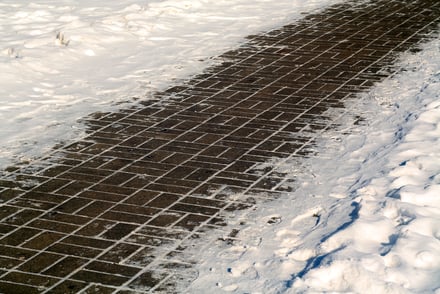As the most visible elements of old homes, windows define the character and curb appeal of the buildings. Moreover, they offer clues to the history and architectural integrity of the house. However, when winter temps set in, those rattling, drafty windows will reduce your comfort, as well as hike your heating bill.
While it’s tempting to consider replacement windows, there are other alternatives including strategies to improve the performance of drafty old windows and reduce energy loss. One reliable approach requires a two-pronged attack: caulking around the outside of the window and weatherstripping the inside.
Exterior Caulking
Start by scraping off any old caulk or peeling paint from around the exterior perimeter of the window. Then, clean away all dirt and dust with soapy water. Make sure the surface is dry. Then, apply a fresh bead of exterior-grade silicone caulk to the perimeter of the window. This will create a continuous wind-blocking seal between the window frame and siding.
Interior Weatherstripping
The numerous different styles of weatherstripping available for sealing windows can make the selection confusing. Popular Mechanics recommends these five:
Adhesive-Backed Foam
This is a compression type of weatherstripping, meaning that when the window closes against it, the foam compresses to seal gaps and block drafts. It features easy peel-and-stick application and cuts easily with scissors. Just be sure to thoroughly clean the area around the inside of the window, as the adhesive won't stick to dusty, dirty surfaces.
On double-hung windows, apply adhesive-backed foam weatherstripping to the bottom edge of the lower sash, and to the top edge of the upper sash. If you don't want to apply the weatherstripping to the sash, stick it to the sill directly below the lower sash, and to the head jamb above the upper sash. Either way, once the sash is closed and locked, the foam will seal out drafts. On sliding or casement windows, apply the adhesive-backed foam to the vertical edge of the sash or vertically along the side jamb.
Tubular Rubber-Gasket Weatherstripping
This is similar to adhesive-backed foam, except that it's formed into a hollow rubber tube instead of dense foam. When compressed by the sash, the tubular weatherstripping conforms to the space, effectively sealing out drafts. Some tubular gaskets have a peel-and-stick adhesive backing, while others have an attached metal or wood flange that must be secured with nails or screws. Also look for foam-filled tubular gaskets that have a spongy-foam core, which holds its shape better than the hollow-core gaskets.
Spring V-Seal
This is a resilient polypropylene plastic or metal strip that comes folded into a V-shape. It's known as tension-seal weatherstripping because the V-shape springs open, creating tension between the sash and window frame that blocks the passage of air. Plastic V-seal can be cut with scissors, but you'll need aviation snips to cut metal V-seal, which comes in copper, aluminum, bronze, and stainless steel. Also, the plastic type often has a peel-and-stick backing, while metal V-seal must be nailed in place. V-seal can be installed vertically along the sides of double-hung windows, and at the horizontal meeting rail where the two sashes meet when closed. On casement or sliding windows, V-seal is installed along the vertical side jamb where the sash closes.
Felt
Felt is one of the oldest types of weatherstripping. It's commonly sold in rolls with or without adhesive backing and is also available with an attached metal mounting flange. Felt is used as a compression weatherstripping around the inside of double-hung, casement, and sliding windows. Felt is affordable and easy to install, but it doesn't last as long as other types of weatherstripping and must be replaced every two to four years.
Window Insulation Kits
These kits block cold air by sealing the entire window behind a large sheet of shrink-wrap plastic. The plastic adheres to the interior window casing with double-sided tape; you then use a blow dryer to seal it in place. Window insulation kits are very effective at sealing out drafts, but keep in mind that you won't be able to open the window until next spring when you peel off the plastic wrap.
Source: How to Winterize Drafty Windows
Renaissance Development, a leader in brick restoration and historic preservation, specializes in the restoration of a historic brick building’s mortar joints using traditional methods (tuckpointing) and materials. Contact us for a free site visit and project quote.
Jan 17, 2019 2:32:35 PM



